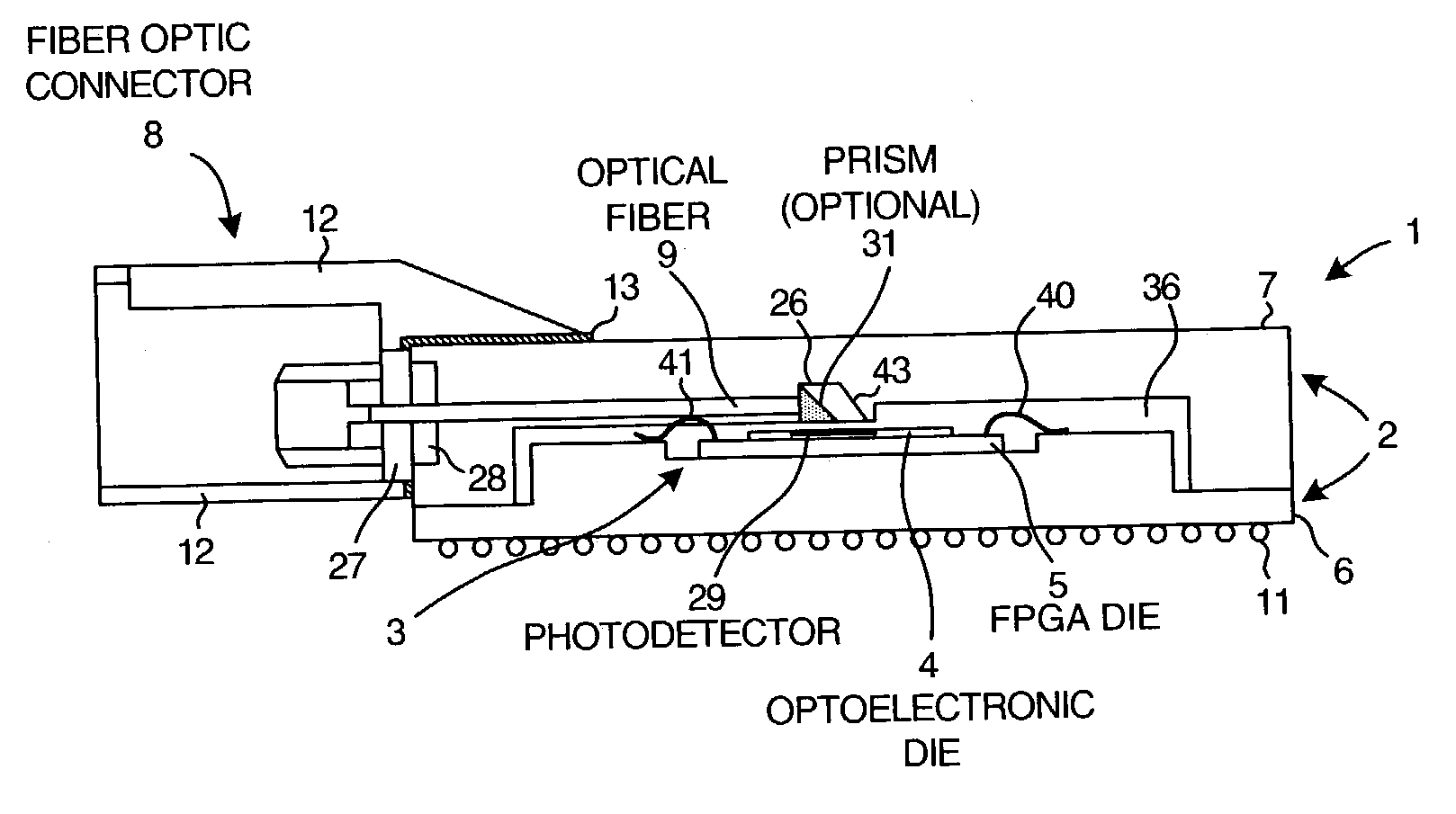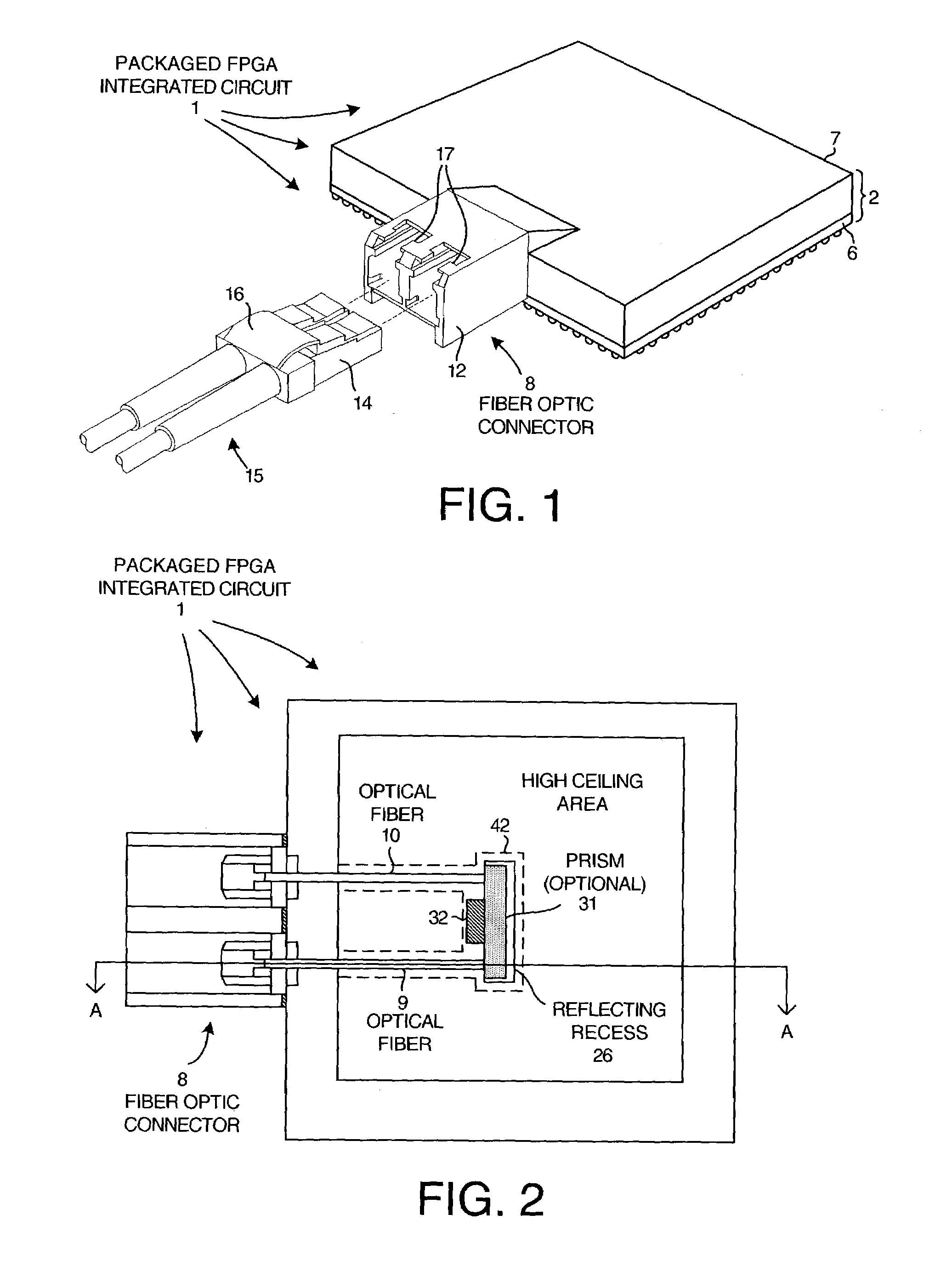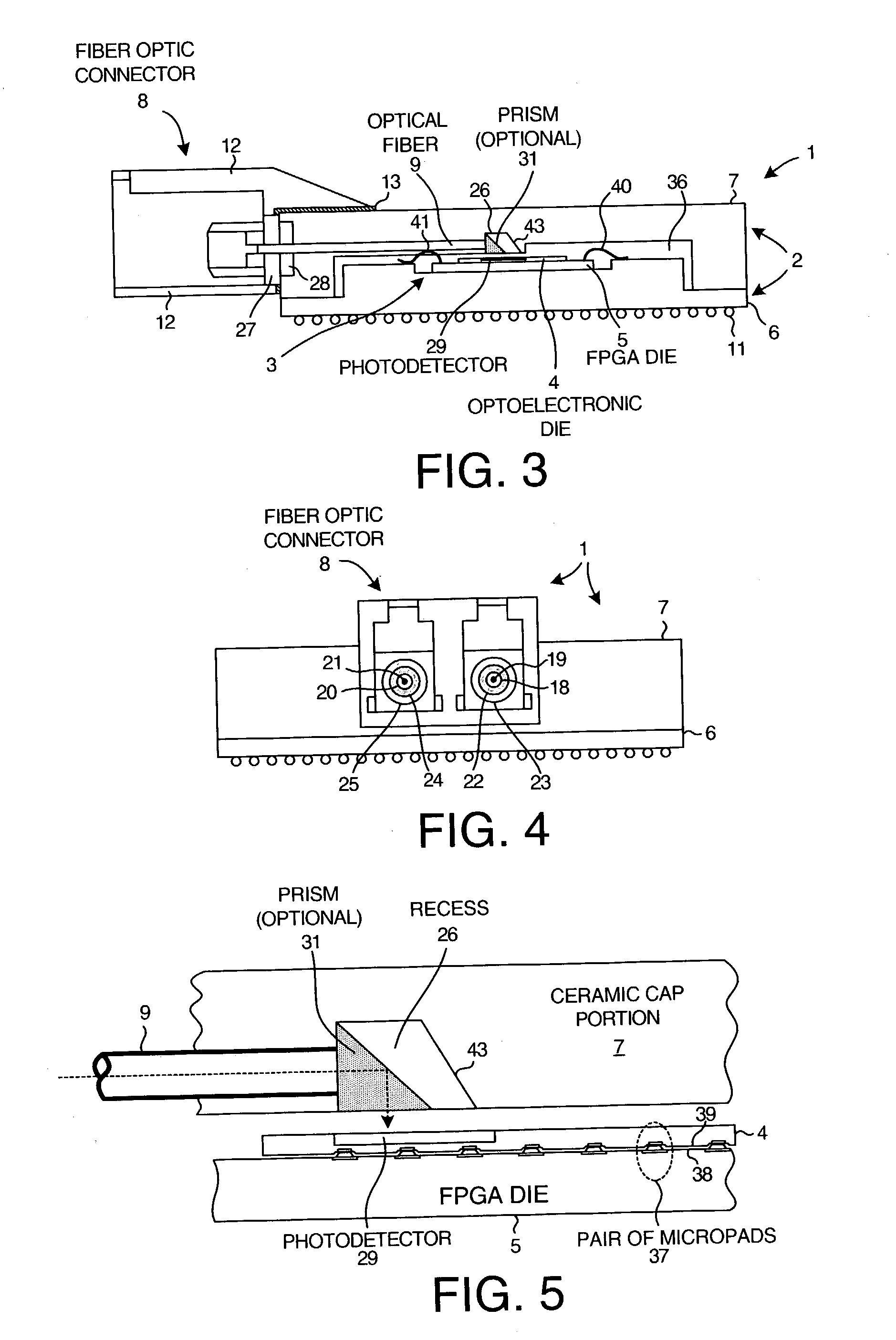Fiber optic field programmable gate array integrated circuit packaging
a technology of integrated circuits and fiber optics, applied in the field of fiber optic integrated circuit packages, can solve the problems of affecting the operation of fpga devices, and affecting the i/o of future fpga devices
- Summary
- Abstract
- Description
- Claims
- Application Information
AI Technical Summary
Benefits of technology
Problems solved by technology
Method used
Image
Examples
second embodiment
[0085]FIG. 21 is a cross-sectional diagram of a packaged FPGA integrated circuit 200 in accordance with the present invention. In this embodiment, light passing through a first optical fiber 201 from an LC SFF connector 202 is redirected by a bent first optical fiber 201 from a direction substantially parallel to the upper surface of FPGA die 5 to a direction substantially perpendicular to the upper surface of optoelectronic die 4. Although not shown in FIG. 21, light emitted from the light generating device of optoelectronic die 4 is redirected by a second bent optical fiber (not shown) ninety degrees from a direction substantially perpendicular to the upper surface of optoelectronic die 4 to the direction substantially parallel to the upper surface of FPGA die 5. The light from the light generating device is directed by the second optical fiber to a second ferrule and sleeve (not shown) of connector 202. The second ferrule and sleeve are disposed behind the ferrule and sleeve illu...
third embodiment
[0088]FIG. 22 is a cross-sectional diagram of a packaged FPGA integrated circuit 300 in accordance with the present invention. In this embodiment, an optical connector 301 is fixed to an upper cap portion 302 of the integrated circuit package. Cap portion 302 of the integrated circuit package can, for example, be made of ceramic, metal or polyimide. An optical fiber 303 extends downward in a direction substantially perpendicular to the upper surface of optoelectronic die 4 from connector 301, through cap portion 302, and to the upper surface of optoelectronic die 4. Optical connector 301 is shown as an ST bulkhead connector. In contrast to the embodiment of FIG. 21, the optical fiber 303 in the embodiment of FIG. 22 does not bend. As in the case of the embodiment of FIG. 21, the optical fiber can be made to touch the upper surface of optoelectronic die 4, or can be spaced so that its end is very close (about 5 microns) to the upper surface of optoelectronic die 4. By reducing the di...
fourth embodiment
[0089]FIG. 23 is a cross-sectional diagram of a packaged FPGA integrated circuit 400 in accordance with the present invention. In this embodiment, rather than the backside surface of an optoelectronic die being die-bonded to the upper surface of an FPGA die, an optoelectronic die 4 is mounted on the upper surface of FPGA die 5 such that the plane of the face side of the optoelectronic die 4 is oriented perpendicularly with respect to the plane of the upper surface of FPGA 5. Optoelectronic die 4 is thin. To facilitate mounting of such a thin die on its edge, a relatively thick support wafer is bonded to a wafer of optoelectronic dice. The composite wafer assembly is then sectioned into the relatively thick structures. Thick die structure 401 shown in cross-section in FIG. 23 is one such structure. Portion 402 is a portion of the support wafer. The thick die structure 401 is then mounted on its side on the upper surface of FPGA 5 as shown in FIG. 23. An optical fiber extends from con...
PUM
 Login to View More
Login to View More Abstract
Description
Claims
Application Information
 Login to View More
Login to View More - R&D
- Intellectual Property
- Life Sciences
- Materials
- Tech Scout
- Unparalleled Data Quality
- Higher Quality Content
- 60% Fewer Hallucinations
Browse by: Latest US Patents, China's latest patents, Technical Efficacy Thesaurus, Application Domain, Technology Topic, Popular Technical Reports.
© 2025 PatSnap. All rights reserved.Legal|Privacy policy|Modern Slavery Act Transparency Statement|Sitemap|About US| Contact US: help@patsnap.com



